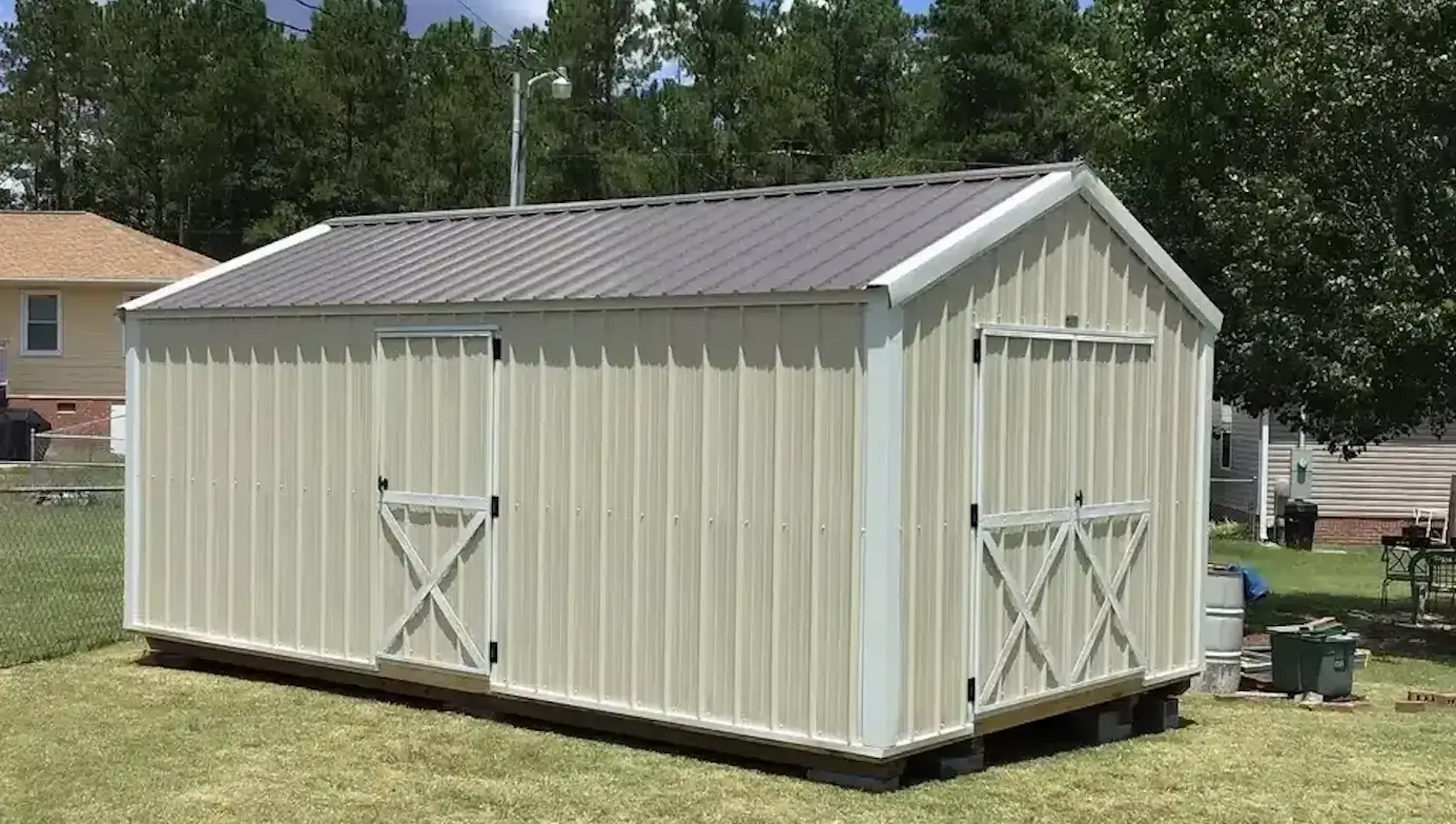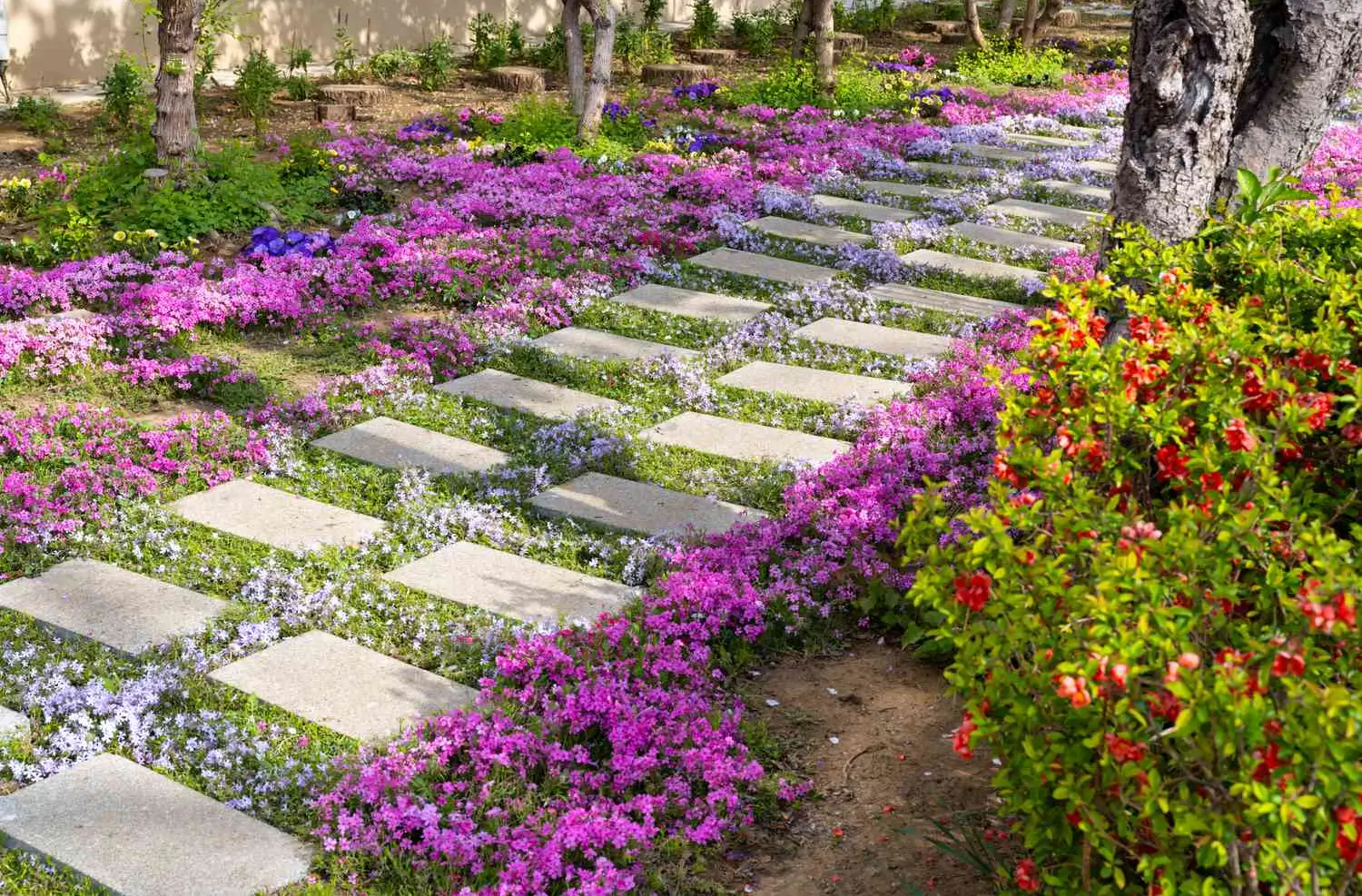- Ground covers are easy to care for, requiring less water, no mowing, and natural weed control.
- Ground covers reduce water runoff and help prevent soil erosion, keeping the soil healthy.
- Select ground covers based on sunlight, soil, and foot traffic to create a thriving, low-maintenance garden.
Cutting a lush, green lawn or crop may appear easy, but it has its own range of obstacles. Grass is high in maintenance, requiring daily watering, trimming, and many uses of fertilizers and pesticides which can be time-consuming and costly. Also, heavy use areas, slopes or shade can damage the grass as well. Here is where the best low maintenance ground cover plants fit in and provide a sustainable solution.
There are low-growing plants that spread to cover the soil, it's called ground covers, and spreads like a thick carpet on the ground. Indeed, researchers have discovered that groundcover plants make up somewhere around 90% of all plant species in the forest. Though not very large, such plants contribute a significant amount to the productivity of an ecosystem, up to 4%. They help nourish the soil, sustain small creatures and offer an eco-friendly beauty touch.
Why Choose Ground Covers Over Grass?
Grass doesn’t grow everywhere, so the practical solution to this problem is ground cover, which protects the soil and uplifts the beauty of the garden.
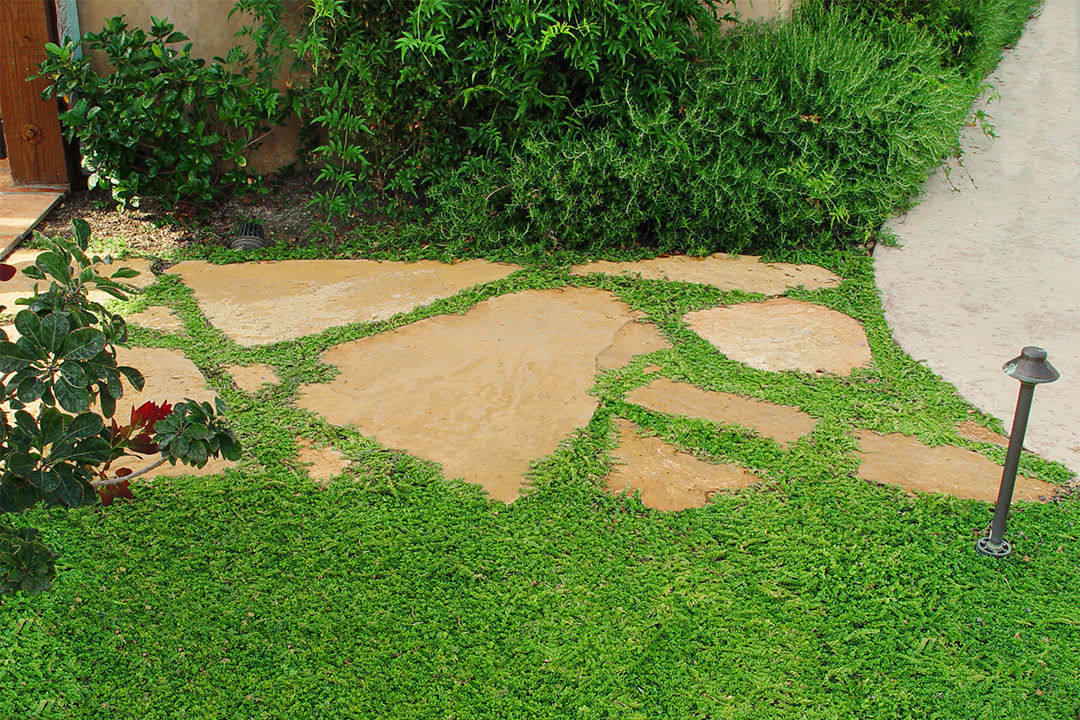
- Water Conservation: Ground covers not only require less water, but they also hold water in the ground for longer. Research indicates they reduce rainwater runoff by as much as 15%; bare soil loses 80% of water. Even on sloping ground, ground covers prevent runoff from reaching 1.5% of the water, ensuring that the soil is not washed away.
- Weed Suppression: Ground covers form a dense carpet over the soil covering the ground and do not grow where there is no space. When they are really dense they block sunlight from reaching the soil, preventing weed seeds from sprouting. This is a natural way of getting rid of weeds without the use of chemical sprays.
- No Mowing Required: With grass lawns, the need for mowing comes around once or twice a week and that can be a time-consuming, labor-intensive job. Ground covers are plants that are simply short, which means users don’t have to cut them. Ideal for anyone wanting a garden that takes less maintenance.
- Better for Shade, Slopes, or Dry Areas: Grass doesn’t do well in the shade, and mowing on a slope can be dangerous. Ground covers such as pachysandra, ajuga or vinca minor do well in shady areas; ivy or liriope are good choices where soil washes away on hills. They’re a great solution for tricky spots where grass doesn’t grow.
- Eco-friendly and Pollinator-friendly: Ground covers are also good for the environment. And some, like creeping thyme or clover, draw bees and butterflies, which help pollinate plants. And since it doesn’t need to be mowed or chemically treated, it’s also environmentally-friendly, helping to shrink the carbon footprint.
MEET THE EXPERT
- ■
Dr. D. Raj Raman leads research on perennial groundcover systems, focusing on their practical applications and the environmental benefits they provide.
- ■
Dr. Susana Goggi leads USDA-funded projects to enhance the effectiveness of ground covers in agriculture.
What to Look for in Low-Maintenance Ground Covers
Consider the suitability of ground covers, not only for their looks but also for how well they adapt. Different plants also have different needs for sun, water, or the ability to withstand foot traffic.
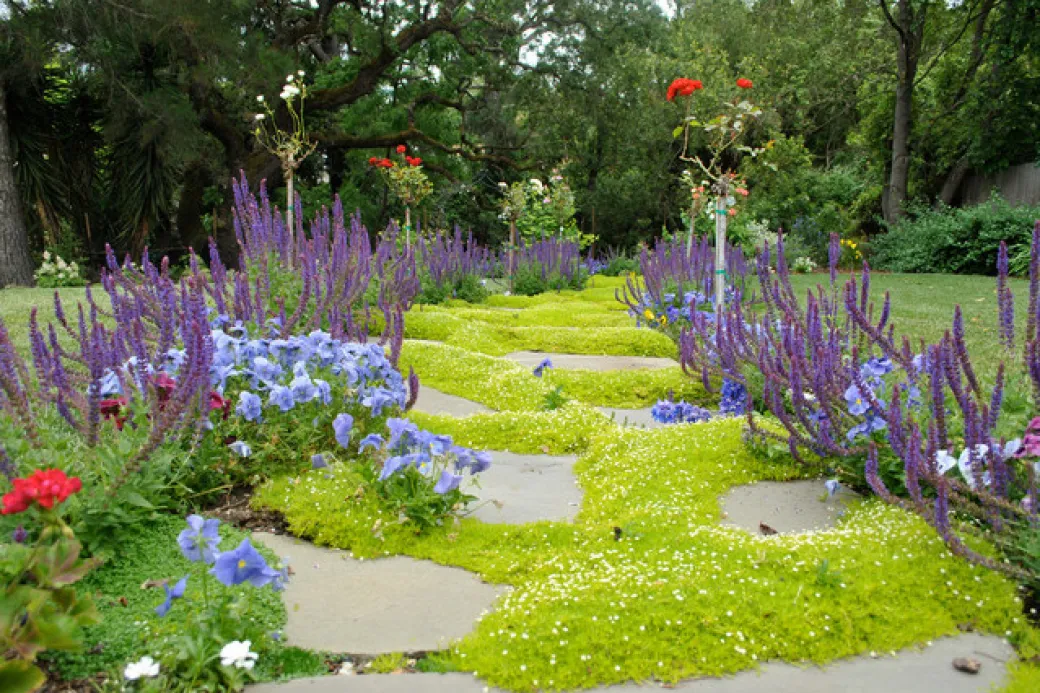
Handles Dry Weather Like a Champ
If you have areas with very little water, or where you don’t want to water every day, then look for drought-tolerant ground covers. Some plants, such as sedum, creeping thyme or ice plants, can survive on barely any water and still maintain their green and lively appearance. They’re perfect for people who want to save time or keep their water bill down.
Fast Spreaders vs Slow Growers
Rapid spreaders like Ajuga and Creeping Jenny are good choices for ground cover material to quickly fill out a garden. They are good at preventing weeds and providing quick coverage in large areas. But some of these may need some pruning to keep them looking sharp.
Conversely, if one prefers a more controlled, well-mannered look, slow growing groundcovers such as moss phlox are a better match. These plants will spread eventually, but they remain more compact and need lower maintenance.
Green All Year vs Seasonal Blooms
Evergreen ground covers such as ivy, pachysandra or liriope maintain their greenery throughout the year, even in winter. There are seasonal ones like moss phlox, which has pretty flowers in spring but then goes to sleep. Evergreen selections are perfect for a green vibe at any time of the year.
Can Handle Footsteps
If the garden gets lots of foot traffic like near paths or where kids play, choose ground covers that can tolerate harsh conditions. Creeping thyme or Irish moss can handle people walking on it and bounce back into its shape fast. These make a smart ground cover alternative to grass for creating a low-maintenance and attractive lawn.
Matches Sunlight and Soil
Different ground covers have specific sunlight and soil needs. Some, like sedum, thrive in full sun, requiring at least 6 hours of sunlight each day, and are perfect for areas where mowing is not an option. On the other hand, plants like Vinca minor or sweet woodruff flourish in shady spots. Soil type is also important; some plants, like sedum, prefer dry, well-drained soil, while others, such as sweet woodruff, do better in moist or clay-rich soil.
5 Ground Cover Picks for Every Type of Yard
Here are 5 ground cover alternatives to grass available at Growcycle that do well in different yard conditions, helping create a beautiful and low-maintenance garden.
1. Creeping Phlox
Creeping Phlox, or Phlox stolonifera, is a low-growing perennial that carpets the garden in spring with starry flowers. It grows in shady places and is found in woodlands and along stream banks in the eastern U.S. Its spreading habit is ideal for spaces where grass would not flourish, such as slopes, rocky areas or shady nooks. Thick leaves prevent weeds from sprouting and the soil from washing away, and in spring, its violet, pink or white flowers give the garden new life.
- Spreads by Itself: This plant spreads through stolons which allows it to be great for ground cover.
- Stops Weeds and Erosion: Dense, mat-like growth of vegetation shades the soil and prevents weed seeds from germinating and it’s a great erosion control ground cover.
- Loves Some Shade: It grows well in shade or partial sun, making it ideal for woodland edges or under trees.
- Tough and Easy: Creeping Phlox is the ideal solution, as it can thrive in cold temperatures (USDA Zones 5 to 9) and requires little maintenance once it's established.
2. Creeping Thyme
Creeping Thyme, also known as ‘Thymus serpyllum’ is a low, evergreen, perennial ground cover plant that spreads as a mat which will give a beautiful and fragrant display in gardens among stepping stones and walkways. Anytime someone steps on it, it lets off a light herbal or citrusy scent that wafts through the air. It is native to Europe and North Africa and is easily grown in dry, rocky or sandy soil. This is fantastic because it deals with drought, helps pollination, and people can even step on it, making it an ideal plant for a low-maintenance, eco-friendly garden.
- Smells Amazing: Crush it and it releases a herbal or lemony scent, and from June through August, it covers itself in pink-lilac flowers.
- Short but Mighty: It reaches just 1–3 inches high, but spreads 12–18 inches across, so it is great for filling in gaps.
- Handles Dryness and Steps: It does well in low-water areas and takes light foot traffic, making it a good choice for dry gardens.
- Tasty Herb: Use it in cooking as usual thyme, but its flavor is a bit milder.
- Cold & Heat Hardy: This hardy plant is able to withstand cold winters and hot summers and thrives in USDA Zones 4-9.
3. Japanese Pachysandra
Japanese Pachysandra, or Pachysandra terminalis, is a slow-growing evergreen plant that is great for shady or north-facing areas. Its shiny green leaves make a nice thick carpet. Tiny white flowers pop up in spring, giving the foliage a soft, graceful appearance. This plant is super cold hardy and loves moist, acidic soil, but it will also survive in neutral to slightly dry soil. An effortless, stylish green blanket for a shadier lawn or container garden.
- Grows Slow but Strong: It takes about 3 years to cover the ground when planted between 6 and 12 inches apart, but once it’s in, it covers completely.
- Loves Shade: Its leaves can turn yellow in full sun, but are nice and green with a glossy finish in deep or partial shade.
- Handles Cold Like a Champ: This is an ice plant that loves the cold, so thrives in USDA Zones 4-9.
- Easy to Multiply: It is easily multiplied by division of clumps, by stem cuttings or by allowing seedlings to spread.
4. Ajuga Reptans
Ajuga reptans, or Bugleweed is a low-growing, evergreen groundcover that’s incredibly popular for its violet-blue flowers in spring and for its stunning deep purple foliage throughout the growing season. The garden looks awesome with its tall flower spikes. Ajuga is not only attractive, but has been used in herbal teas or salads, and even worked into rags to help stop bleeding in folk medicine. But be careful, it can get rather exuberant and get out of control in some places, so watch it.
- Spreads Fast with Runners: It employs stolons in order to spread out, which allows it to fully cover an area relatively fast, preventing weeds and soil erosion.
- Pretty Blue-Purple Flowers: It produces 10-15 cm tall flower spikes in spring, attracting bees and butterflies.
- Adaptable but Can Be Pushy: It grows great in shady, wet spots, but in some areas like parts of the U.S, it can spread too much and crowd out other plants.
- Stays Green and Tough: Hardy in zones 3-10, the greenery maintains its green color throughout the year in warm climates.
5. Blue Leadwood
Blue Leadwood( aka Ceratostigma plumbaginoides) is a small, spreading perennial that shines with bright blue flowers from late summer to fall. It is native to the stony foothills of China, but is universally cultivated in temperate lands. Its deep green leaves turn red or purple in the fall, so it becomes even more attractive. It tolerates drought and is perfect for stone walls, pots or low garden borders. Plus, it has been given a nod from the Royal Horticultural Society.
- Blooms Late: It blooms between late summer and early fall, long after other plants are finished blooming.
- Great for Pots and Walls: Its spreading style makes it awesome for containers, dry stone walls, or rock gardens.
- Tough and Flexible: Hardy in USDA Zones 5-9, and can take the cold down to −10 °C (14 °F), but appreciates full sun.
- Award Winner: Award of Garden Merit for its beauty, strength and value in the garden.
ℹ
Planting & Maintenance Tips
Correct planting and maintenance are integral to maintaining healthy and vigorous ground covers. Here are some important tips to set up for success and make it low maintenance.
- Soil Preparation: Check soil pH and nutrient levels before planting. Adding compost or organic matter improves drainage, fertility, and helps plants get a strong start.
- Planting Techniques: Space perennial ground covers appropriately based on variety, plant at the correct depth, and choose the right season for optimal establishment.
- Ongoing Care: Water regularly, especially during dry periods. Use mulch to retain moisture and control weeds. Trim occasionally for a neat appearance and healthy spread.
- Troubleshooting: Address issues like pests, stunted growth, or diseases early. Early intervention and adjusted care routines can prevent long-term damage.
Ground Cover Ideas Based on Yard Conditions
Picking the right ground cover for different parts of the yard can make a big difference in looks and maintenance. There are plenty of great choices for the particular yard’s needs.
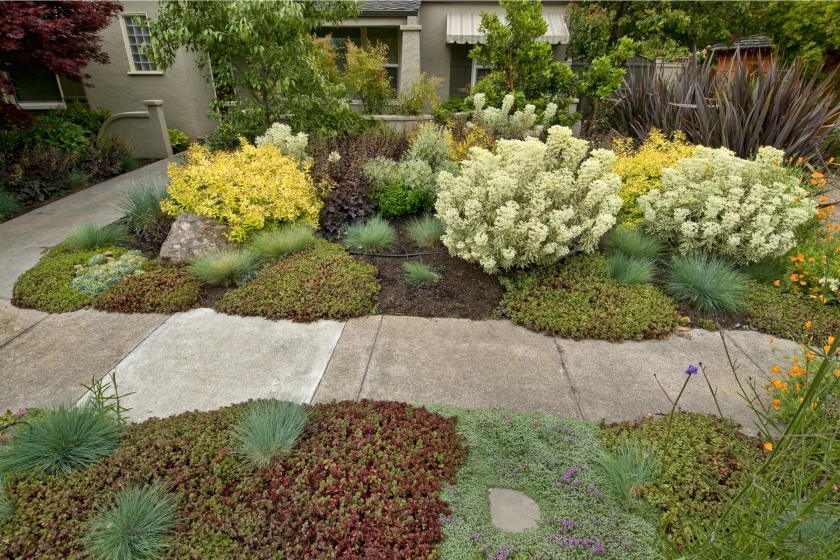
For Shady Areas
In areas of the garden where it’s barely in the sun, under trees or adjacent to walls, the grass really has to fight to grow.
- Pachysandra: One of the rare ground covers that enjoys deep shade areas, Pachysandra grows best in moist and acidic soil which is very easy to maintain in shady locations. Its glossy green leaves are forever looking fresh and lovely, never dying back in winter.
- Vinca Minor: Vinca minor not only tolerates shade advance in spring but also covers the ground with pretty blue, purple, or white blooms which is something hard to find in shaded parts of the yard.
For Sunny Spots
If the yard is in a full 6 hours of sunlight, it requires ground cover that will tolerate heat and bright light.
- Creeping Jenny: Creeping Jenny’s chartreuse or golden-green leaves glow even brighter when backlit in the garden bed. It's a low, spreading plant that's ideal for rock gardens, container edges or along pathways.
- Sedum: Sedum’s fleshy leaves allow it to thrive in the hot sun with little water, making it a good plant for hot dry areas. Its summer flowers attract bees and butterflies, thus serving as a pollinator-friendly ground cover.
For Slopes and Erosion Control
Ivy and Liriope are fast growing ground cover for slope regions, in which rainwater can wash away the land that is referred to as erosion.
- Ivy: With Ivy, aerial roots cling so closely to walls, banks, and irregular surfaces that they prevent soil from being naturally washed away. And it spreads quickly even in thin soil, which makes it great for steep or rocky slopes where digging is a challenge.
- Liriope: Liriope’s clumping roots hold soil in place and stop water run-off down hillsides and won’t get out of control. Its clean, grassy appearance makes it ideal for erosion control and it looks great, and then summer flower spikes of purple give your garden a fun lift.
For Busy Walkways
In areas of the garden where there is a lot of traffic where people walk, where paths intersect or where kids play it needs hardy ground covers that can withstand feet.
- Creeping Thyme: Even after being trampled, Creeping Thyme releases a pleasant herbal scent and recovers quickly and it's super strong and perfect for areas with a lot of foot traffic.
- Irish Moss: Irish moss boasts a thick, velvety green surface so soft that people want to walk on it barefoot; many people plant it around patios and garden beds precisely for this reason. It grows only 1 to 2 inches tall, so people aren’t going to trip or fall over it simply because it’s too short.
FAQs
What is the best groundcover?
That depends on the yard, but choose from these favorites such as Creeping Thyme, Sedum and Vinca Minor. They are low maintenance and drought tolerant ground cover options.
What is the meaning of ground cover?
Ground covers are simply plants that root close to the ground and are used to cover an area completely. They prevent weeds and make the garden look green and neat.
What is the cheapest way to cover the ground?
The most affordable method is to cover large expanses of ground with fast-spreading ground covers such as Creeping Jenny or Clover. Starting them from seed is much more cost-effective than purchasing ready-to-plant seedlings at a nursery.
The Bottom Line
For those who dream of having an easy-to-care-for garden that does not involve trimming, ground covers are the perfect replacement for conventional grass. They save water, block weeds, maintain healthy soil and offer year-round greenery without the need for daily care.
Gardeners can choose from dependable, low-maintenance options and discover premium plants from Growcycle. They'll easily add a delightful, sustainable green space to their yard with little yard work.
Disclaimer: This material is for informational purposes only and should not be relied on for legal, medical, financial, or any other form of professional advice.
About the Author
Environmental Journalist Focused on Sustainable Agriculture
Victor Miller is an environmental journalist at Growcycle, specializing in sustainable agriculture. With a passion for storytelling, he highlights the latest trends, innovations, and practices that promote ecological balance and responsible farming.
